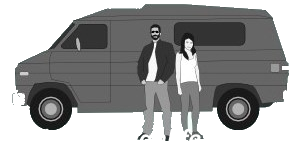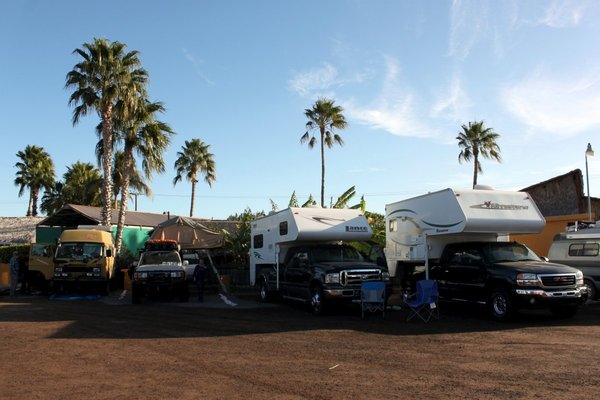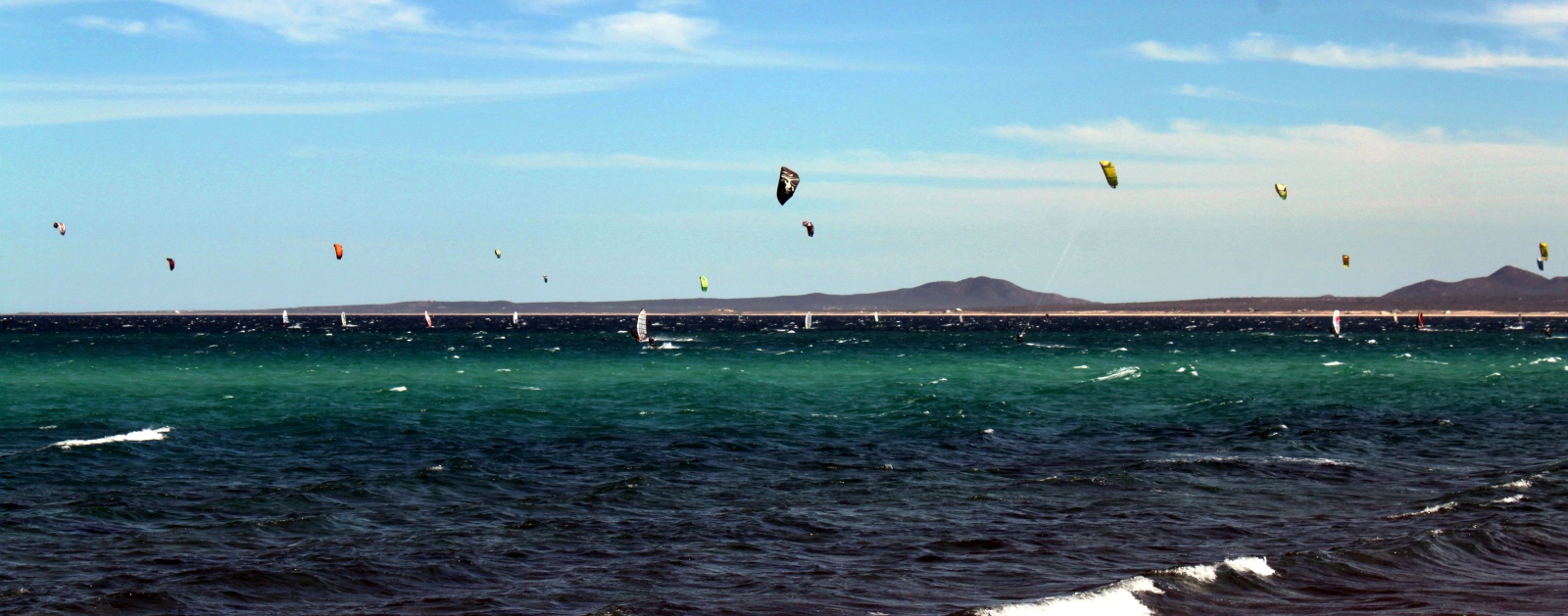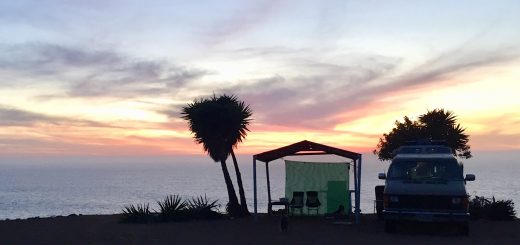A guide: Baja is coming again
Kerri and I have another trip to Baja coming at the beginning of the year, so I am locked and loaded in thought about the place and can’t get it off my mind. Fixed on the future, I am… bare with me.
In early 2016, we visited Baja for a three month trip and were simply blown away with many of the places and all of the people. I admit that there was some fear about going to Mexico in the months leading up to the trip, but that all fell away very quickly once educating ourselves and we stopped listening to hype on Internet forums and mass media. Yes, there are dangerous places in Mexico, just as there are dangerous places in America. In general, Baja is not one of those dangerous places.
With that out of the way, the decision to bring the van instead of the Airstream trailer was made for various reasons, but primarily so we could venture down those dirt roads and camp in places off the beaten path that larger RVs simply could not do. And while we did do that, we did not do it all that often since campgrounds and RV parks were so cheap ($5-10 a night). Still, I’m happy that we did not bring the larger rig. Many do of course, but the ones I have spoken with agree that some roads are too small to take the larger rigs, and even the main highway is scary as heck in the daylight when another large rig is coming at you at 50+ miles per hour. Finally, there is zero – not an inch – of shoulder to use when those semi’s come crashing at you at speed. Again, it is totally possible in a larger rig, and many do, but you should expect to be staying in town and be careful on all roads.

There are no interstates in Baja. You will be traveling below 50 MPH in most places, and there is little to no signage to tell you the speed limit. 55MPH feels like you are risking life and limb even on the main MEX1 highway, and potholes are mean as snot. One thing I can not stress enough: Do not drive the roads after dark. The wildlife use the asphalt to stay warm, and there are literally zero street lights. Crashing into a sleeping cow is not the way you want to end your trip in Baja.
Traffic can be a bit scary in the cities. It seems that you can not rely on any of those other car’s lights actually working. Locals do not stop at stop signs, but you should (or you will get a ticket). Stop signs may not even exist, but you need to know where they should be and stop anyway. You do get the hang of it real quick, or just default to stopping at any intersection if needed.
Blinkers are not used the same way they are in America. Here we tell others that *we* are doing something (turning or passing), but in Baja the blinkers are used to tell *others* what to do. For example, if I want to pass the car ahead, I do not use my blinker to signal I am doing so. Instead, he will use his blinker to tell me that the road ahead is clear to pass. It took a while to get accustomed too this (after a few mistakes) but I actually prefer it.

Speedbumps are the the worst thing about Baja. Most are not signed to give you any warning, and only half are even painted to give you a visual clue that they exist. All are a foot tall and require you to come to nearly a full stop before climbing up or down them. They will be at the entrance and exit of every single town (along with some in the town)… if in doubt, slow down. Launching your rig into the air will ruin a pair of underwear.
Boondocking is there, but when camping in established places (many are completely empty I might add) cost so little, it is hard to pass up. There are a few places we boondocked down there – none of which would I recommend anything larger than a van or truck – and they are all spectacular spots to camp. You can read more about those spots here.
Fuel is expensive (about 1.5 times the cost of USA) but abundant now. Even the “fuel gap” is no big deal now. Just fuel up constantly, even if you have used only a third of a tank, and look at a map before you start the day’s drive. I never came close to running out of fuel, but others I met down there ran out a few times. Still, everyone that did run out was helped out by the super-friendly locals almost immediately.

Food is very cheap. Eating out is less expensive then buying groceries down there. $3 will get you a good meal along with a beer. Taco trucks are the best and they are everywhere. Vendors will even drive up to your camp and have food for sale (at a higher cost). Buy it, as the food is amazing and you will be feeding a family of locals with your few-dollar purchase.
Dogs are all over the place, but all are super well behaved. The mean ones are killed by the locals quickly, so they have all learned to be real nice and respectful. If you feed one, he will not leave, so keep that in mind. It would be easy to find a dog you love and bring it home with you (just need rabies shots). Be aware that some dogs are “owned” by locals. If you see one with a collar (there will be no tags) that is the sign of ownership. No collar = homeless and up for grabs.
Police were not an issue for us. Other families we went down with had interactions with local police, and ended up having to pay the officer a few dollars to escape a larger fine. That is expected, so pack a few extra $20’s for this. Keep only one in your wallet at a time. Use a photo copy of your ID and keep the original for yourself. The police may hold your ID hostage until you pay, so you should give them something that can be walked away from, not your hard-to-replace ID or passport. Still, they are all good folks, so don’t worry too much about this. Consider it a donation to feed the officer’s family for the week. They will all appreciate it.

Military checkpoints were easy. They were all respectful and professional. About 50% of the time they would want to come inside the van and look around. Since we had dogs with us, we exited the van (with the dogs) and gave them the space. They would just do a very minor search (open drawers and cabinets) without pulling everything out of them. Most asked for ID and destination location (which they logged) but otherwise every professional guys.
Language will be Spanish, but you can get by easy with English. I quickly learned the few words I needed to survive Baja; Cervesa, Gracias, and Banos… that’s about it to be honest.
The people of Baja are fantastic. The Mexican people that is. They are all extremely-friendly folks. I did not meet a single mean spirited person while down there… at least not a Mexican. Even if you make a traffic-mistake, they simply stop and wait for you to get things sorted… no honking, no flipping the bird, nothing. Great folks! The further south you go (South of La Paz) the more Americans you will find, and the harder to tolerate the people become… sadly, because more and more are Americans.
For us, the sweet spot, for both scenic places and people, is from San Felipe to San Carlos. That’s about a 500 mile stretch, much of it passes through a National Preserve. The beaches are spectacular and the small towns are the same. There are too many great places in that region for me to list here, but feel free to peruse my favorite places to camp in Baja.
I recommend the Traveler’s Guide to camping in Baja for first time visitors. The book details every single RV park and campground, as well as the roads to access each. It really helped calm the nerves when finding a place to stay and getting to each.






Awesome Guide!
Nina
I find all this to be true.
Part of me wants Americans to be unafraid of Baja, but another part of me wants them to be afraid of Baja so it’s less overrun by gringos. I mean, you spend all day dodging potholes and then find the campground you’d planned on is full. Rats. :/
I found your site via Campendium and enjoyed reading about your last trip to Baja. My wife and I traveled there in 2004 and 2012 crossing the border both times at Tecate. Is the road from San Filipe south to Mex1 paved now? It was dirt before and washboards rattle everything in our 2006 Sprinter. Look forward to following your trip this winter.
That road is still a hardcore dirt road (at least as of Jan 2016 when I was there. 25 miles – and two hours – of stress and bumps, but we made it through. One of our traveling partners did not.
Bummer. Coming from N.M. it would be so much shorter to go through San Felipe plus I have never been there. I had heard rumors that it was being slowly paved. I have been dreaming of La Paz after reading posts from Take To The Highway (http://taketothehighway.com/category/travel-blogs/mexico/baja). When I am not on the road I like to live vicariously through travel blogs particularly about the great American southwest and Mexico. Many thanks for the update.